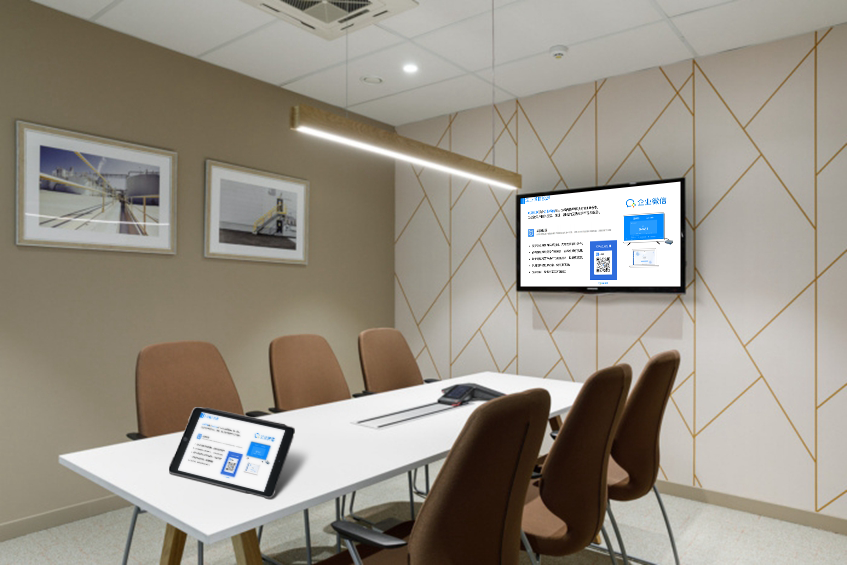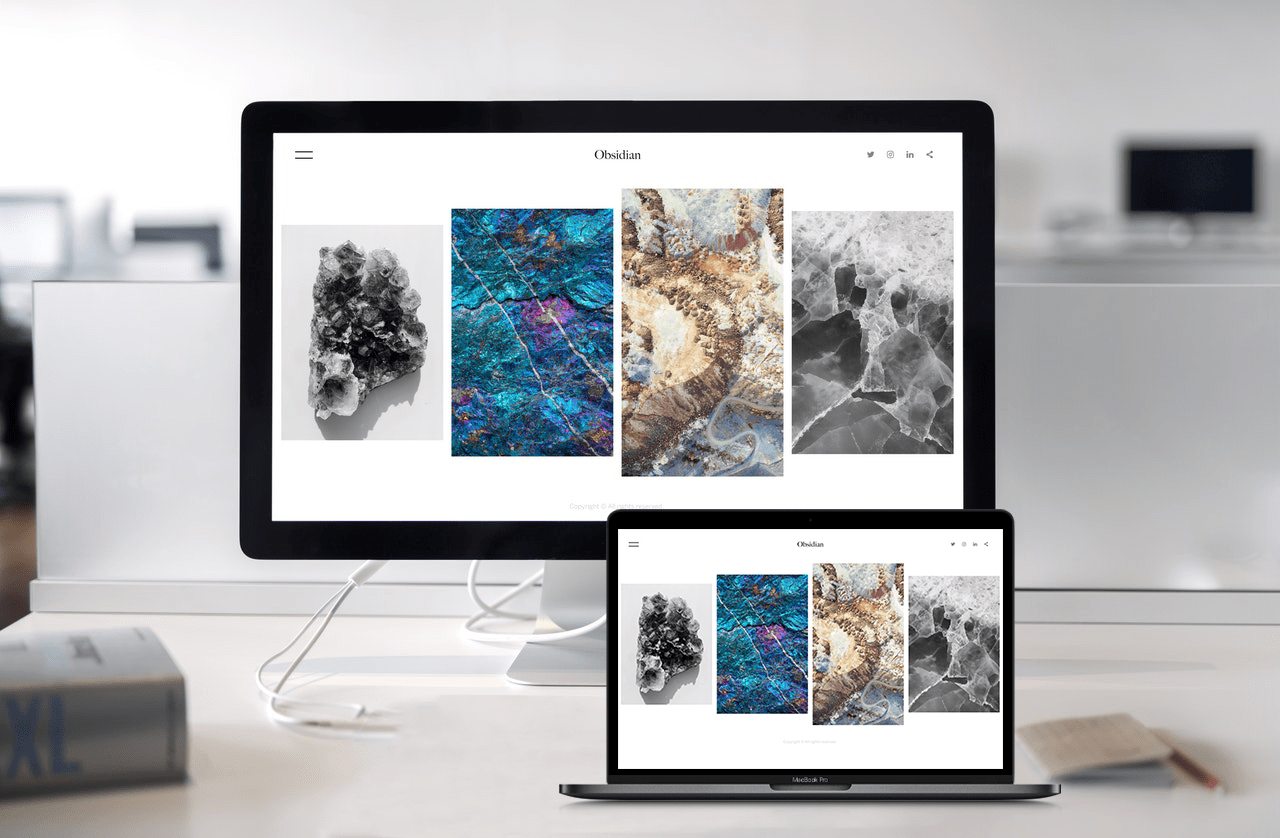Wireless Screen Mirroring: An All-Scenario Efficient Interconnection Solution
Wireless screen mirroring technology has been upgraded from a single-function tool to the core link for all-scenario device interconnection. Addressing the pain points in different scenarios like office, education, retail, and home, it has formed a complete solution that covers hardware adaptation, function optimization, and scenario implementation. This allows device interaction to be completely free from the constraints of cables and delivers a flexible experience of “content wherever, display wherever.”
Office Meeting Solution: Efficient, Boundaryless Collaboration
Core Pain Points and Solutions
In traditional meetings, the three major pain points are “time-consuming device connections, cumbersome multi-terminal switching, and disjointed remote collaboration.” The wireless screen mirroring solution solves these problems with a “three-screen linkage” architecture: the main conference screen is responsible for centralized content display, the presenter’s terminal (phone/computer) enables one-click mirroring, and remote participants’ devices synchronize the screen and annotations via the cloud.
- Quick Start: Using “proximity sensing” technology, a mirroring prompt automatically pops up when a participant’s device is near the conference screen. They can connect by tapping to confirm, shortening the startup time from 5 minutes to 10 seconds.
- Multi-Stream Split-Screen: It supports up to 4 devices mirroring at the same time. The main screen can display PPTs, data reports, and a video conference feed in a split-screen view. The customer persona from the marketing department and the development progress from the technical department can be analyzed in parallel, boosting decision-making efficiency by 60%.
- Remote Collaboration: Integrated with a cloud meeting function, the video window of a remote participant and the local mirrored content are displayed in a split-screen view on the main screen. Phone annotations are synchronized to the large screen in real time, making remote collaboration feel like working on-site.
Hardware Adaptation Scheme
It provides customized hardware combinations for different sizes of conference rooms:
- Small Conference Rooms (5-10 people): Equipped with a 32-55-inch touch conference screen + a wireless mirroring module, it supports direct mirroring from phones and laptops to meet the needs of quick discussions.
- Medium Conference Rooms (10-30 people): It uses a 65-86-inch 4K large screen + a smart camera + a microphone array. While mirroring, it can perform facial recognition for check-in and automatically track the speaker, with meeting minutes being automatically generated.
- Large Lecture Halls (50+ people): A dual-screen linkage system is deployed, with the main screen displaying the core content and the side screen showing participants’ annotations and voting results in real time, ensuring that the audience in the back can clearly get the information.
Smart Education Solution: A New Model for Interactive Classrooms
Addressing Pain Points in Teaching Scenarios
The problems of “one-way content delivery, low student participation, and delayed feedback of outcomes” in traditional classrooms can be solved by the “two-way interactive” mechanism of wireless screen mirroring:
- Teacher-Student Linkage: After a teacher mirrors courseware from a tablet, students can submit their answers using a phone or tablet. The main screen generates a data dashboard in 3 seconds. Knowledge points with an error rate of over 60% are automatically marked as key points and trigger the push of similar examples.
- Group Collaboration: Up to 6 student terminals can connect to the main classroom screen at the same time. The results of each group’s discussion can be mirrored in turns or in a split-screen comparison. For a history class, the analysis of “taxation systems in different dynasties” can be displayed side-by-side on the large screen, making the differences clear at a glance.
- Resource Consolidation: The entire class is recorded, and the mirrored content is automatically linked. After class, students can scan a QR code to review the courseware with annotations and the problem-solving process, improving review efficiency by 50%.
Hardware Deployment Scheme
- Regular Classroom: A projector/electronic whiteboard + a wireless mirroring box, which supports mirroring from multiple devices like phones, computers, and visualizers to meet basic interaction needs.
- Advanced Classroom: It is equipped with an 86-inch smart blackboard + a student answer pad. Handwritten annotations from the teacher and mirrored content from students are integrated in real time, supporting a multi-solution comparison display.
- Outdoor Classroom: It uses a portable projector + a 4G mirroring terminal. In a non-network environment, a direct hotspot connection can be used, and students can mirror the experimental phenomena they film with their phones in real time for analysis, breaking the limitations of classroom walls.

Retail Display Solution: A New Path for Marketing Conversion
Core Demands of Retail Scenarios
In-store marketing is limited by “unintuitive product displays, weak customer interaction, and difficulty in tracking data,” which hinder conversion. The wireless screen mirroring solution builds a closed loop of “experience – interaction – conversion”:
- Dynamic Display: A salesperson can use a phone to mirror a product’s 3D model to a large screen in the store, and a customer can use touch gestures to rotate and view details. In an appliance store, a washing machine’s running video and energy consumption data can be displayed in a split-screen view, which is 3 times more persuasive than a static poster.
- Instant Interaction: Customers can scan a QR code with their phones to participate in a large-screen poll (e.g., “preferred color,” “feature needs”). The results are instantly generated as a chart, and the salesperson can recommend products accordingly, increasing the conversion rate by 40%.
- Data Consolidation: The system records the customer’s dwell time and interaction frequency with the mirrored content, analyzing popular products and inefficient display segments, providing data support for display optimization.
Hardware Implementation Scheme
- Small Store: A 55-65-inch wall-mounted screen + a phone mirroring module to achieve low-cost dynamic product displays.
- Experience Store: It uses a transparent screen + multi-screen linkage. The main screen displays a product video, and the secondary screen receives personalized requests mirrored from customers’ phones, enabling “one-to-one” recommendations.
- Exhibition Site: A portable folding screen + a 4G mirroring device to quickly set up a display area in a non-network environment. It supports up to 10 customer phones connecting simultaneously to view materials.
Home Entertainment Solution: A New Upgrade for Immersive Experiences
Optimizing the Home Scenario Experience
In home entertainment, common problems are “cumbersome content switching between multiple devices, out-of-sync audio/video, and a high barrier to entry for operation.” The wireless screen mirroring solution enhances the experience through “ecosystem integration”:
- Cross-Device Flow: When watching a series on a phone, you can seamlessly mirror it to the TV, pause it, and then go back to the phone to continue watching. When a child is mirroring an animation from a tablet to the TV, a parent can use the TV remote to control the playback without having to touch the child’s device.
- Multi-Screen Interaction: It supports a “TV + speaker + phone” linkage. When mirroring a movie, the TV displays the screen, the speakers output surround sound, and the phone acts as a remote to adjust the progress, providing an immersive experience comparable to a cinema.
- Elderly-Friendly: It simplifies operational steps. You can start a function with voice commands (e.g., “mirror my phone photos”). The large screen displays graphical guidance to lower the barrier to entry.
Hardware Combination Scheme
- Basic Version: A smart TV + a mirroring device to meet basic mirroring needs from phones and computers.
- Advanced Version: A 4K TV + a soundbar + a mirroring gateway, which supports simultaneous connection of multiple devices and audio synchronization.
- Whole-House Version: Multiple TVs in different rooms are linked. A sports game mirrored to the living room TV can be synchronized to the bedroom TV, and a phone can control the playback status in each room.
The core of the wireless screen mirroring solution is to let technology adapt to the scenario, not the other way around. From efficient decision-making in a conference room to in-depth interaction in a classroom, from marketing conversion in a store to entertainment sharing at home, through customized hardware, optimized functions, and data linkage, every device interconnection can precisely match the scenario’s needs, ultimately achieving the dual value of efficiency improvement and experience upgrade.